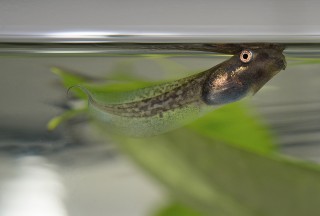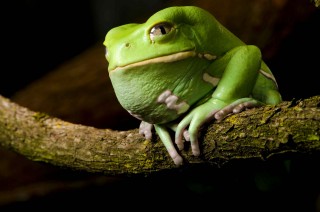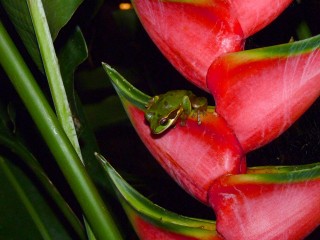
December 17, 2020
The Frog That Can Freeze
- as seen by -
 Micah Siegel
Micah Siegel
As we settle in to winter, the vibrance of our natural environment starts to feel a little more distant. The trees, so recently awash in brilliant fall hues, now stand bare. A walk in the woods feels a little quieter these days, a little more solitary. The cold winds that keep us indoors also send all manner of vulnerable critters into hibernation. Many of these animals must seek hibernacula that keep them warm enough to stave off freezing temperatures, either by choosing a site that is well insulated or one that is below the frostline, since few animals can tolerate being truly frozen.
Then there are wood frogs.
The North American wood frog (Lithobates sylvaticus) is adapted to surviving the winter in a way that is almost unbelievable. Rather than burrow deep underground or seek out the warmth of a mountain rock crevice, wood frogs hibernate close to the soil’s surface. Unlike other animals that experience slower metabolisms and lower body temperatures during hibernation, wood frogs don’t just get very cold and slow down. They literally freeze. Up to about two thirds of the water in a wood frog’s body can turn to ice and they will still awaken come spring. They do this by utilizing compounds such as urea and glucose to prevent water loss from cells throughout their body. While their blood freezes solid and their limbs become stiff like icicles, their cells can continue functioning.
The first heavy rains of spring are the wood frogs’ cue to reemerge. They gather by the hundreds in temporary ponds called vernal pools where they breed and lay their eggs. These raucous breeding events fill the forest with the wood frog’s distinctive quack-like call and are over just as quickly as they begin. Within a few short days, the adult wood frogs return to their leafy homes on the forest floor.
Be sure to keep an eye out on your next springtime hike for these unassuming, well-camouflaged amphibians. They are a remarkable example of the extreme adaptations that a species is capable of.




Leave a Comment